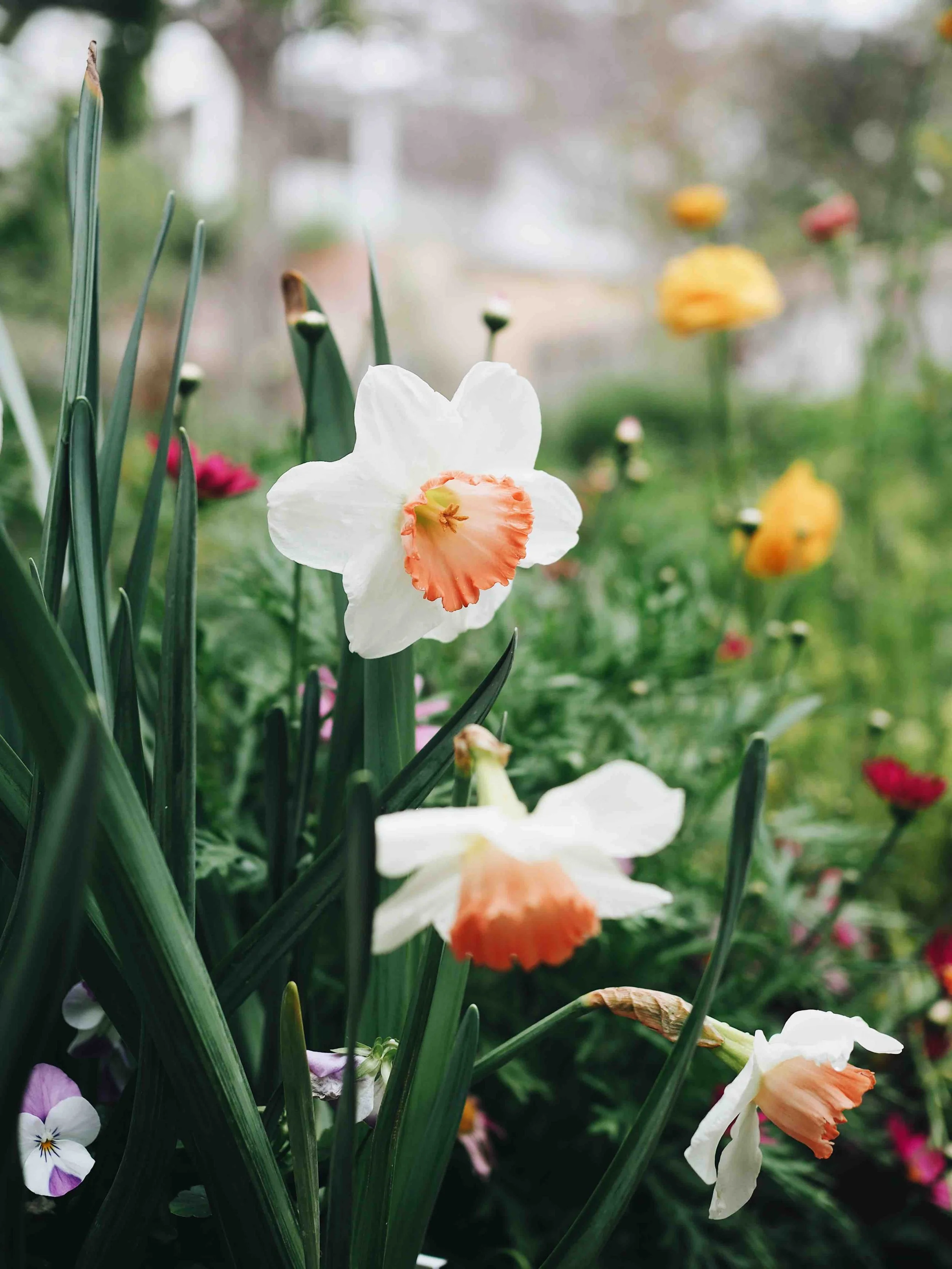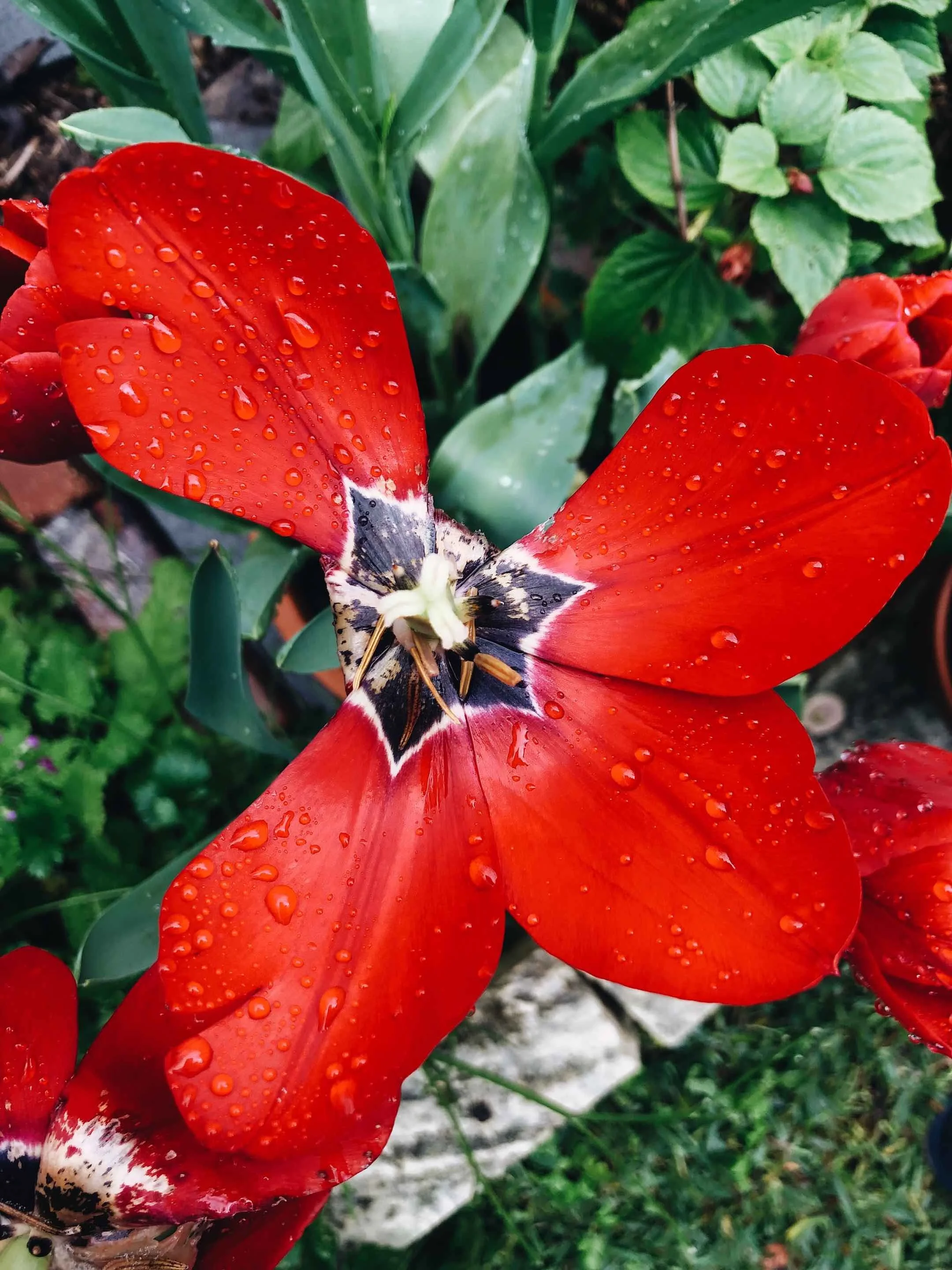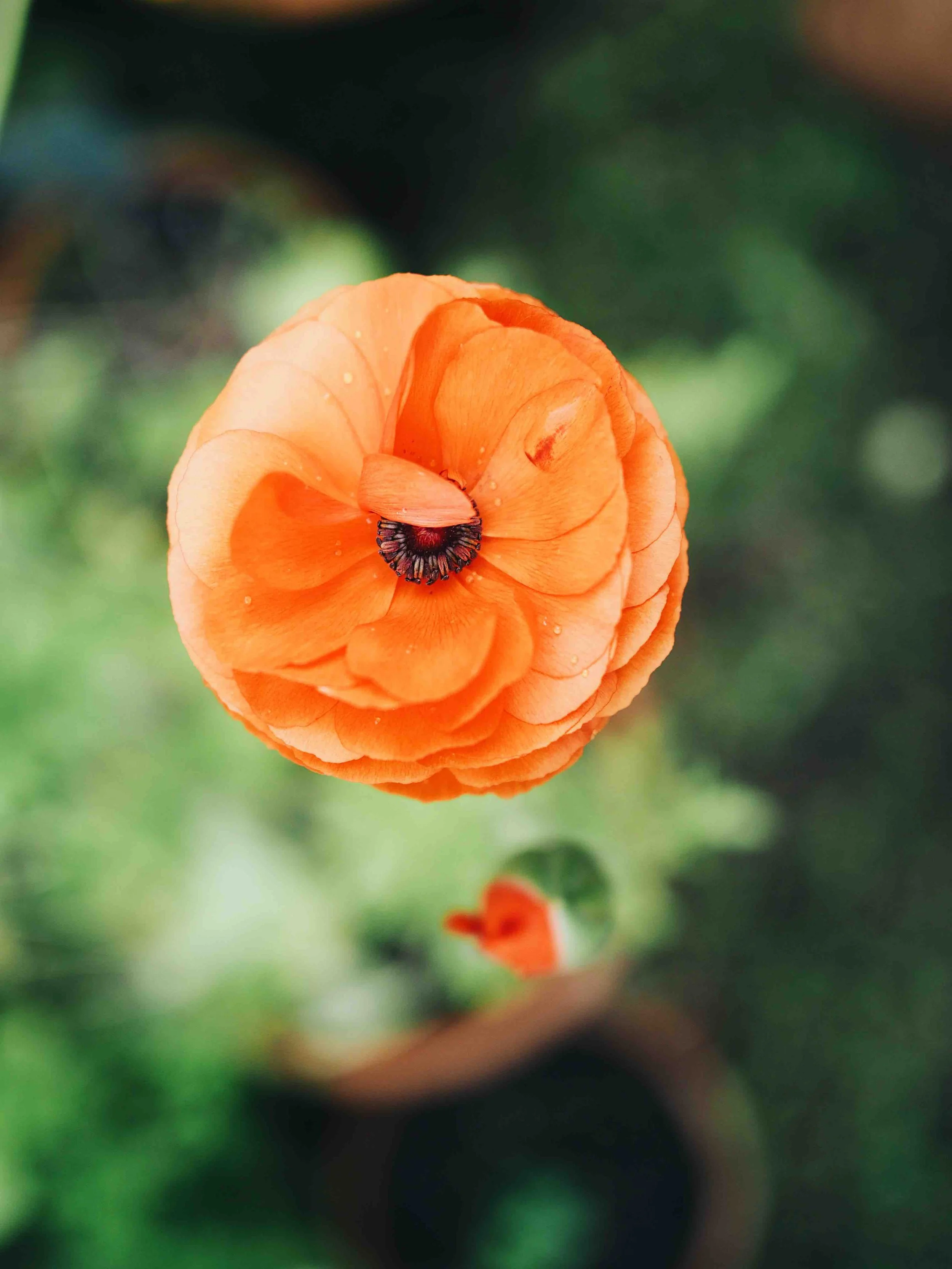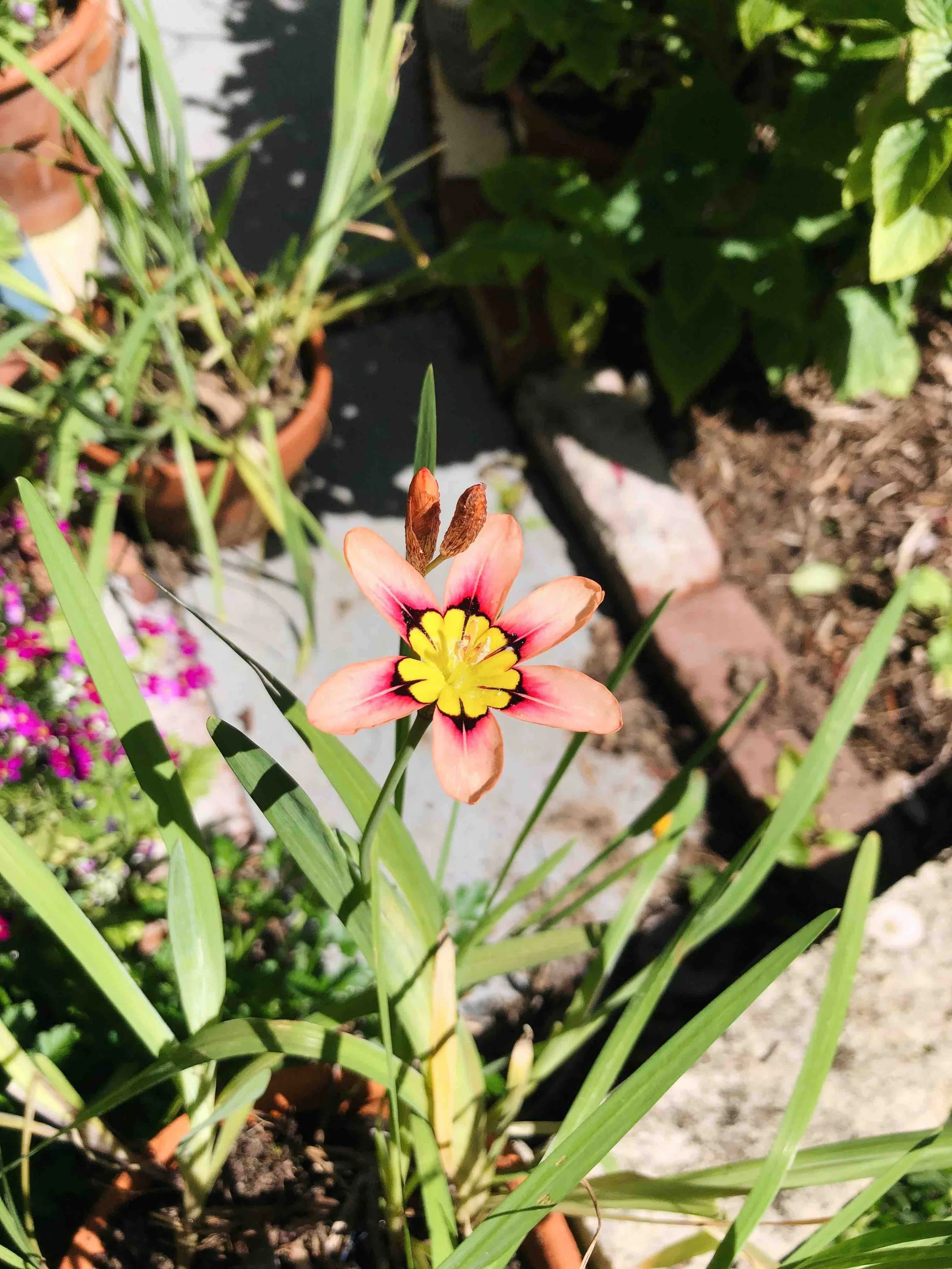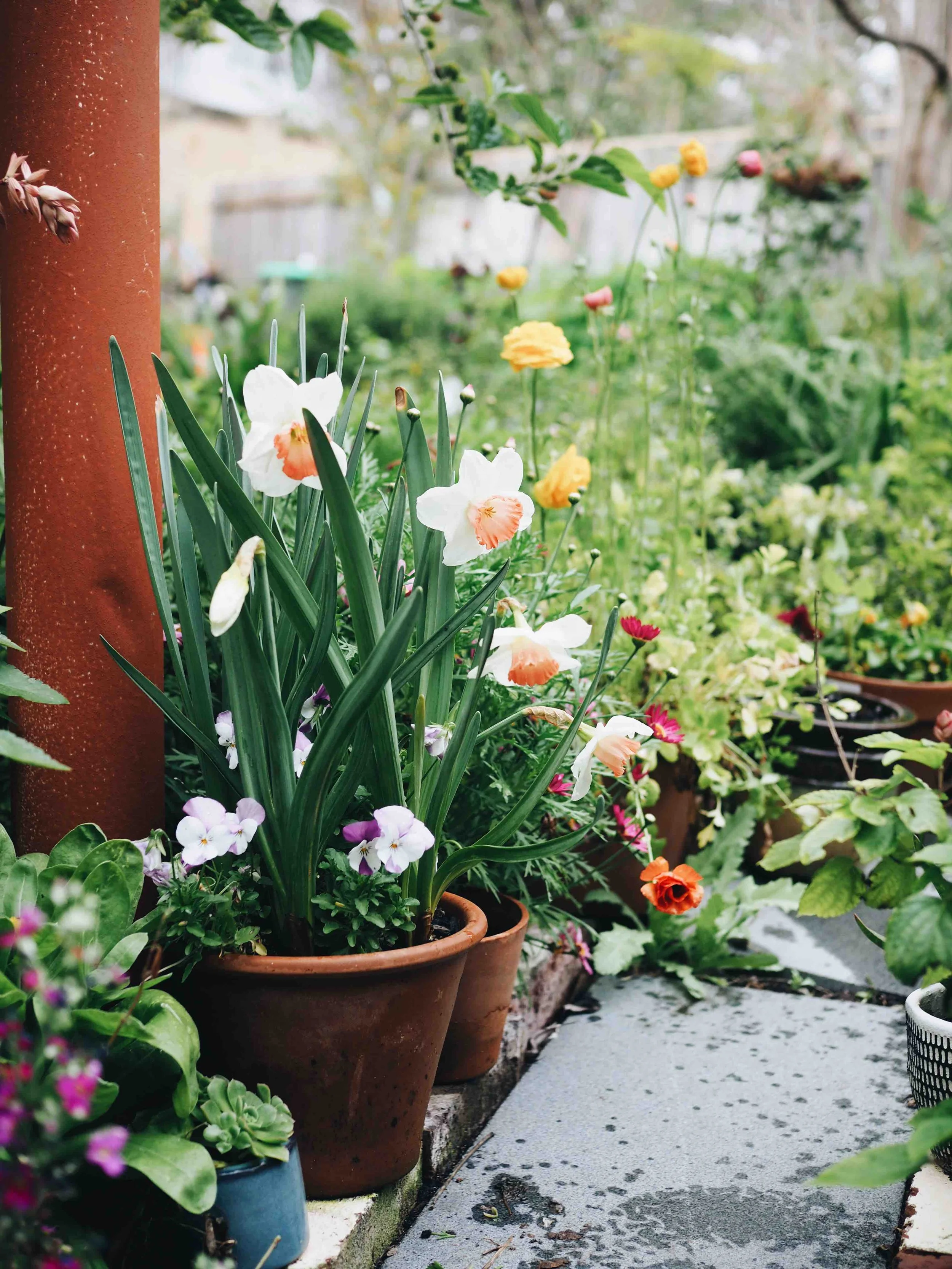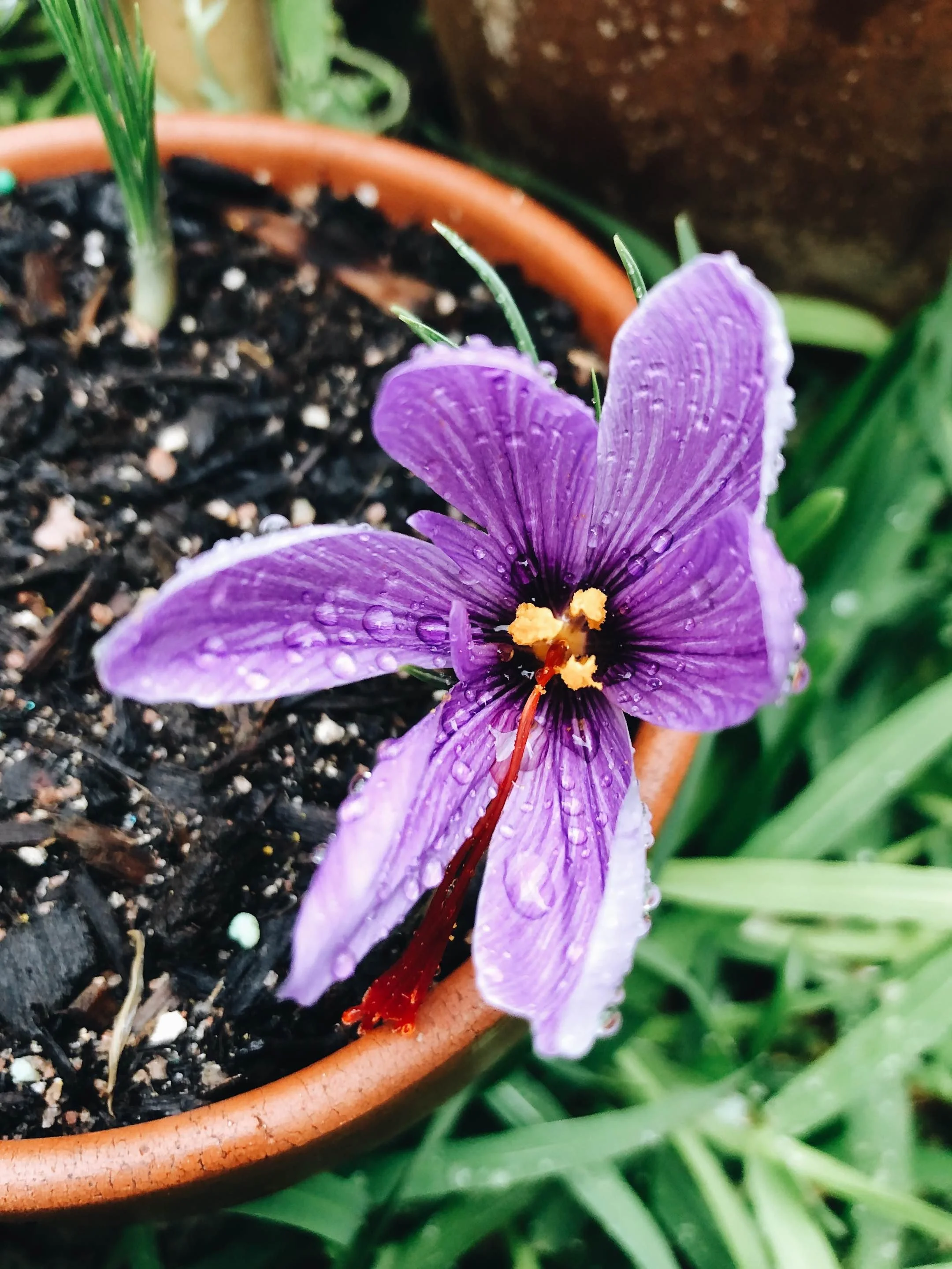When and How to Plant Bulbs for Spring
The beginning of Autumn is like that amazing first date you once had at the start of what eventually becomes a totally disappointing relationship.
It starts so well. Everything is new and exciting and beautiful - there’s a frisson in the air and you think ‘ ‘Yes! yes! This is for me. This is wonderful. This is amazing!’
After all, the beginning of autumn really is perfect; golden light, hazy afternoons and crisp mornings filled with bird song. It’s dreamy and no one can blame you for being besotted.
But you know what happens when you date early autumn? You marry mid-winter. Those hazy golden days vanish to the ether and before you know it BAM it’s July and your socks are soggy, the days are 3 minutes long and no one is doing ANYTHING FUN EVER.
As you may have noticed, I have very mixed feelings about this season.
I think my ideal world would be one in which autumn and spring lasted 5 months each, with two months left to split between summer and winter. The truth is I don’t actually hate winter, it’s just too damn long. And reliably, every year by the time June 20th rolls around I’m cursing the weather, accidentally falling asleep in front of the TV at 8pm and ‘working from home’ (aka in bed… in my pyjamas) a lot more than I care to admit.
Do you feel the same? Does winter linger like a raspy cough and leave you bored, antisocial and sullenly wishing for summer?
If it does, I have one small suggestion. Plant bulbs now.
I’ve said it before and I’ll say it again: there is nothing more hopeful than a spring bulb. Right at that low point, right when you’re certain those grey-sky days will unfold unendingly across your dreary lifetime, just when you’re losing hope that summer, mangoes or coconut scented sunscreen ever existed in the first place, that is the moment the tentative green head of a tulip will nose its way cautiously out of the soil, proving your pessimism gloriously - wonderfully - wrong.
It might sound ridiculous that someone could derive so much pleasure from a little pot of bulbs, but don’t knock it til you’ve tried it.
Bulbs are one of the most magical and life affirming flowering plants in spring, so if you tend to find yourself weary of winter and wishing for sunshine and colour, read on and get some bulbs in the ground ASAP.
PSST
Got a question about bulbs that I haven’t answered in this post?
Head over to the Gardening with Casey Joy Facebook group and let me know!
Our facebook community is a place to share your garden wins and challenges with other growers and it’s the best way to ask me any of your lingering garden questions. Click the button below to join our free facebook group.
When to plant bulbs for spring
The thing about bulbs is: they require planning. You need to know what you want to grow and get them in the garden many months before they bloom. When I was just starting to get obsessed with gardening I always missed the cut off - I would only realise how desperately I wanted to grow hyacinths, tulips and daffodils once September arrived, and by then it was most definitely too late.
Here’s what you need to remember:
If you want to grow bulbs for spring, sow them in autumn.
If you want to grow bulbs for summer, sow them in late winter or early spring.
If you want to grow bulbs for autumn, sow them in spring
If you want to grow bulbs for late winter/early spring, sow them in mid-autumn
What bulbs to plant in every season
Although this post is mainly about spring bulbs, it seems only reasonable to give you a quick run down of my favourite bulbs to plant throughout the year. If you get the bulb-bug this season and want to grow bulbs all year round, give these beauties a try:
Spring flowering bulbs (sow in autumn):
Freesias
Jonquils
Tulips
Hyacinths
Daffodils
Grape hyacinths
Sparaxis
Irises
Anemones
Tritonia
Triteleia
Snowflakes
Ranunculi
Summer flowering bulbs (sow in late winter/early spring):
Oriental lilies
Gladioli
Dahlias
Hippaestrums
Liliums
Pineapple lilies
Autumn flowering bulbs (sow in spring):
Spider lily
Autumn snowflakes
Belladonna lilies
Saffron crocuses
Nerines
Late winter/early spring flowering bulbs (sow in mid-autumn):
Some of the bulbs in the spring list will, if you’re lucky, grace your garden with their beauty a little early, giving you a first (and very welcome) flush of flowers in late winter. These include:
Hyacinths
Grape hyacinths
Tulips
Daffodils
Jonquils
Planting bulbs in pots and containers
The main problem I seem to run into when growing bulbs is losing them amongst my garden beds. Bulbs are dormant and invisible for a large part of the year, so if you plant them in your garden beds (unless you have a much better memory than me which is - admittedly - fairly likely), chances are you’ll end up planting on top of them, digging them up, splitting them in half with a shovel or sticking a bird bath right on top of them (all things I have done, many times).
For this reason, I am a big fan of planting bulbs in pots. They never get lost, I can label them so I don’t forget what I’ve planted, and they’re not at risk of partial decapitation during periods of overzealous digging.
Growing your bulbs in pots or containers has a few other advantages:
You can keep them out of the way until they start to bloom, at which point you can move them to a prime position where you can see and enjoy them every day
You can pack them nice and tight in the pot (or even plant a pot with a few different kinds of bulbs) - generously filled pots look beautiful and I find the tight growing conditions help my bulbs stay upright, rather than toppling over in a garden bed.
If you are growing bulbs that need to be ‘lifted’ (more on that in a sec), it’s really easy to simply tip them out of their pot once they’ve finished flowering, pop them away white they’re dormant and replant next season.
It’s easier to control the amount of water your bulbs get when they’re in pots - for bulbs and tubers that are prone to rotting in wet soil (like dahlias) this can help keep them dry enough that you can enjoy them for many years.
Once your bulbs are planted you can add a small annual to the top of the pot, so it’s not sitting around empty for ages. Here are a few ideas for what to plant on top of bulbs in pots:
Violas
Pansies
Sweet alyssum
Primulas
Nemesia
Two last tips for growing bulbs in pots:
Make sure that your pot has a few holes for drainage so that the bulbs aren’t sitting in water (this can cause them to rot).
Use a good quality potting mix with a slow-release fertiliser so that the bulbs have plenty of food once they start growing in spring (this will give you bigger, better blooms and healthier plants).
The bulb lasagne method
Another advantage to planting bulbs in pots is you can use the lasagne method! This is where you plant several different kinds of bulbs in layers in a single pot. The result is a pot full of spring blooms - different colours, shapes and textures - that has a long flowering window for you to enjoy.
To make a bulb lasagne, pick a tall, deep pot (at least 30cm deep) and fill it about 1/3 of the way up with a good quality potting mix.
You want your biggest bulbs on the bottom layer, tulips are often a good one to pick for your first layer, as they don’t mind being planted deeply. Pack them in nice and tight, with just a few cm in between each bulb, then add a layer (about 5cm of potting mix).
For your next layer, go for a bulb in the narcissus family (like a daffodil or jonquil). Again, pack the bulbs in nice and tight and top with another layer of potting mix.
For your final layer, pick a smaller bulb that likes to be planted at a more shallow depth, for instances crocuses, grape hyacinths or ranunculi. Sow these and top with a final layer of potting mix (plus a small annual like some pansies if you like).
Planting bulbs in garden beds
If you decide to plant your bulbs in your garden beds I’d recommend planting them in groups or ‘drifts’, rather than dotted around in isolation (single bulbs don’t tend to look good when planted out on their own - they are much more impressive and natural-looking when planted in groups).
A good way to give your bulb placement a natural appearance is to toss them in a group on the ground and then plant them where they fall.
If you’re worried about digging up your bulbs by accident, plant them in the corners of your garden beds where you’re less likely to go digging. You could also try planting hardy bulbs like daffodils, jonquils and snowdrops in your lawn or underneath a tree (just make sure you don’t mow over them once they’ve started growing!)
Whether you go for pots or garden beds, most bulbs like plenty of full sun, so be sure to check the planting recommendations and pick a spot in your garden that will give your bulbs the sunlight they need to produce big, beautiful flowers.
How to plant bulbs
There are two main things to get right when planting your bulbs, you need to:
Plant them the right way up: Look for a pointy top on bulbs like tulips - this should point upwards. You can also look for roots protruding from the base of the bulb - these need to point downwards.
Plant them at the right depth: a good general rule of thumb is to plant your bulb at a depth of 2-3 times its size, but this isn’t a blanket rule (hippeastrums like to be planted so that their top half is sticking right out of the soil!) so make sure to double check the ideal planting depth for your specific bulbs before popping them in.
Looking after your bulbs
Once planted, spring bulbs are pretty low maintenance until they start sprouting in late winter/early spring. Until then, your main job is to stop them from getting waterlogged or totally drying out. Waterlogged bulbs can rot and die before they sprout, while totally dry bulbs can mummify and wither.
Keep the soil moist but not wet and you should see happy little bulbs beginning to emerge towards the end of winter.
Once your bulbs begin to grow, their water and sunlight demands increase. Make sure they’re getting plenty of water and are in a nice sunny position.
The easiest bulbs to grow in Perth
Finally, if you want to embrace the bulb but are hesitant because the whole thing seems like an involved, convoluted procedure - I understand.
There are many bulbs that require more effort than I’m willing to invest.
These are the bulbs that need to be ‘lifted’ at the end of the season. Lifting bulbs is, as the name suggests, digging them up out of the soil and storing them in a cool, dark space until it’s time to sow them again. Some bulbs (including certain varieties of tulips, hyacinths and daffodils) go a step further and need to be kept in the fridge for 6 weeks (to mimic a real winter) before planting out in places with mild climates, like Perth.
Other bulbs, like tulips and hyacinths tend to give you just one beautiful year of blooms - their second year blooms are often underwhelming. The general recommendation is to grow tulips and hyacinths in a pot in the first year so you can really enjoy them, then pop them somewhere in a garden bed for subsequent years - they’ll still bloom but may not be as impressive. Growing them en-masse in your garden beds is a good way to still get a lot of beauty out of them, even after their first show stopping year has passed.
The good news is there are SO many bulbs that don’t need all this fussing. There are bulbs that don’t need to be lifted at all, and you can find varieties that don’t need to be chilled to grow year after year. Personally, I’m only willing to grow bulbs that are easy, so to finish off, here are my three biggest tips for making bulb growing easy.
Make sure to select varieties of bulbs that don’t need to be chilled
Plant bulbs in pots or free-draining soil, so they’re not at risk of waterlogged rotting over winter (this is especially important for dahlias, but fortunately Perth soil is basically sand, so drainage isn’t usually hard to come by).
Grow bulbs that actually like our climate and are predisposed to thrive year after year - my best pics are: daffodils, jonquils, snowdrops, saffron crocuses, ranunculi and freesias.
Where to order your bulbs
Looking to get some bulbs online? Here are three of my favourite places to get my bulbs (not sponsored).

